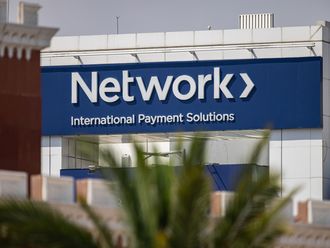Dubai: The less-supportive economic environment is expected to result in further deterioration in asset quality. As of September 30, 2016, these indicators plateaued for the GCC banks but analysts see impact to linger for the next 12 to 18 months.
Standard & Poor’s expects the downward trend to last for at least two years, barring any unexpected increase in oil prices. The rating agency assumes oil prices to stabilise at $50 (Dh183.50) per barrel in 2017 and 2018, and forecast unweighted average economic growth for the six GCC countries of 2.2 per cent in 2017 and 2.5 per cent in 2018.
Rated banks in the GCC continued to display good asset quality indicators, profitability, and capitalisation in 2016 by global standards, but with signs of deterioration from 2015. Over the past year, S&P has taken several negative rating actions on banks in the GCC. Most of these were concentrated in Bahrain, Oman, and Saudi Arabia.
“We think that contractors, subcontractors, small and mid-size enterprises (SMEs), and highly leveraged retail clients will drive the deterioration of asset quality, as the drop in economic prospects has a negative bearing on project pipelines, government subsidies, salaries, and job markets,” said Suha Urgan, an analyst at S&P.
Analysts say exposures of some banks to the real estate sector, specifically some of the large Islamic banks, is also a factor to watch in the current asset quality cycle, specifically for the Kuwaiti, Omani, and the UAE markets.
Loan restructurings
The rating agencies expect non-performing loans (NPLs) averaging in the range of 3-5 per cent of total assets in the GCC next year. “We expect new problem loan formation and increased loan restructurings due to sluggish economic activity and tightening liquidity. Certain sectors, particularly contracting, construction, real estate, retail and SME [small and medium enterprises], will be more affected,” said Olivier Panis, a Vice President at Moody’s,
High levels of borrower and sector loan concentration continue to expose banks to unexpected shocks. Profitability is projected to remain sound despite a moderate increase in funding and provisioning costs and reduced business activity. Rising yields on loans are expected to gradually offset increasing funding costs, although with a lag, and pricing competition remains intense in some markets.
Structural challenges, such as, limited transparency of large corporate borrowers, as well as sizeable related-party lending will persist and can amplify downside risks. However new macro-prudential regulations, such as large exposure limits, mortgage loan-to-value caps, consumer lending caps, and credit bureaus are expected to support loan performance over time.
On a positive note, analysts say some regulators either have updated or plan to update their bankruptcy laws to make them friendlier for creditors, with the objective of encouraging restructuring for viable businesses. Overall cost of funding is expected to increase due to lower liquidity, a direct consequence of the low oil prices and increase in interest rates.
Strong funding profile
Growth in customer deposits slowed to 2.4 per cent in the first nine months of 2016, compared to 5.4 per cent in 2015, for banks in the GCC. This situation is somewhat counterbalanced that GCC banks’ funding profile remains strong by international standards. It is mostly dominated by core customer deposits, while the use of wholesale funding remains limited, except for a few large and sophisticated issuers. The GCC banking system’s loan-to-deposit ratio averaged 91.0 per cent at September 30, 2016, compared with 88.8 per cent at year-end 2015, ranging from a high 116.9 per cent for Qatar to a low 54.2 per cent for Bahraini retail banks.
GCC banks continue to display strong capitalisation by international standards, with an unweighted average risk-adjusted capital (RAC) ratio of 11.8 per cent at year-end 2015. Analysts say that capitalisation has dropped over the past two years, from an average of 12.5 per cent at year-end 2013, as rapid growth of financing has not been matched by additional capital raisings or conservative dividend payout ratios. The drop in RAC ratios is partly the result of rating downgrades on sovereigns, and our view of increased economic risks, translating into higher risk weights in RAC calculation.












